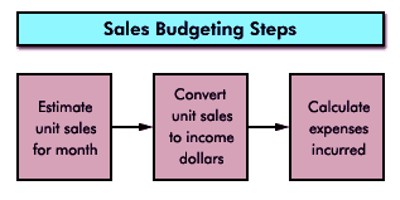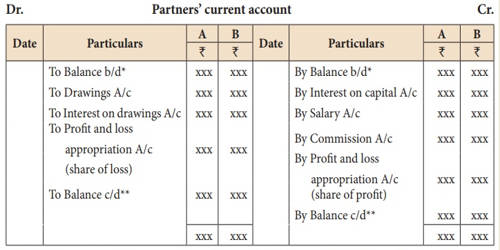Sales Budget and its Preparation
The sales budget provides an estimate of goods to be sold and revenue to be derived from sales. A business uses sales budgets to set department goals, estimate earnings and forecast production requirements. The sales budget is a starting point in the budgeting procedure. The sales budget affects both other operating budgets and the overall master budget of the company. That is, budgeting exercise usually commences with the preparation of the sales budget because the customers’ demand is usually the key factor for most organizations.
A sales budget is one of the functional/operating budgets and is essential, a forecast of sales to be effected in a budget period. It also shows total sales which are simply the product of expected sales units and expected the price per unit. Sales budget defines the quantities and values of expected sales in total as well as product wise and area wise during the definite future period. Basically, the sales budget is what management expects to sell and the revenues collected from these sales.
Sales budget forms the fundamental basis for other functional budgets and it is needed to coordinate the production function with the expected demand for a particular product. Most sales budgets include monthly and quarterly figures as well. The preparation of sales budget requires forecasts of quantities to be sold and standard prices at which these quantities may be sold. Additionally, the budget provides details in both dollars and units.

Up-to-date statistics covering the following area are usually compiled to prepare the budget:
- Past sales by the firm and by its competitors in each geographical area.
- Movements in the total customer demand and in the market share of the firm and its competitors.
- The total sale by the competitors in geographical areas not served by the firm.
- In the case of industrial products, the trend in sales of the industries to which the customers belongs.
- The trend of sales in each geographical area compared with the trend in other areas.
- Quantity and value of past sales.
- General economic and market condition.
- Relative profitability of the products.
- Plans and policies of the firm pertaining to pricing, advertisement, and sales promotion, market research, etc.
- Competition
- Report from salesmen and the quality of the sales force.
- Seasonal changes in sales and price change.
- Company’s productive capacity.
- Long-term sales trends.
- Anticipated introduction of new, improved or substitute product by the company or its competitors.
- An expected shift of the customers to the competitor.
Summary: In most of the companies, sales estimates are prepared by each of the salesmen. These estimates move upwards through a formal channel and ultimately reach the chief of the sales function, where they are compiled and adjusted for factors which are unknown to salesmen.
It provides details of the amount of money that a firm estimates it will receive from the sales of its goods and services in a particular period. The process involves holding of discussions with managers of all levels which broadens participant’s thinking.
Information Source:
















